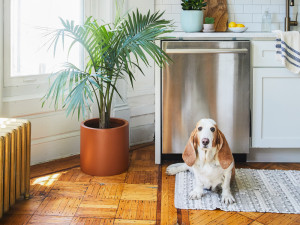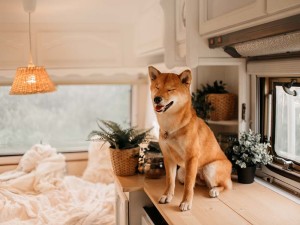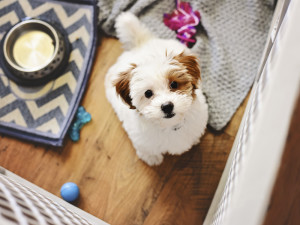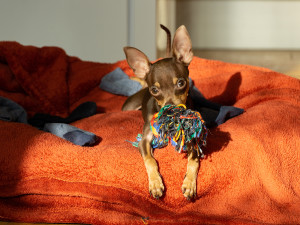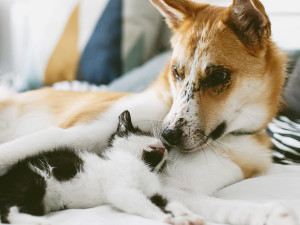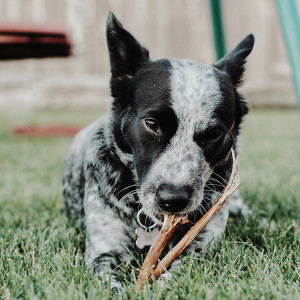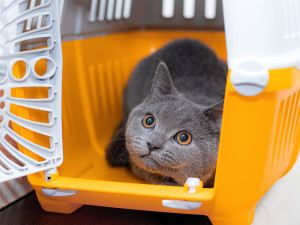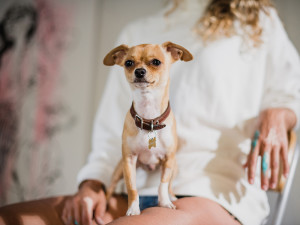How to Dog-Proof Your Home
Our room-to-room guide to get your house in dog-safe shape.
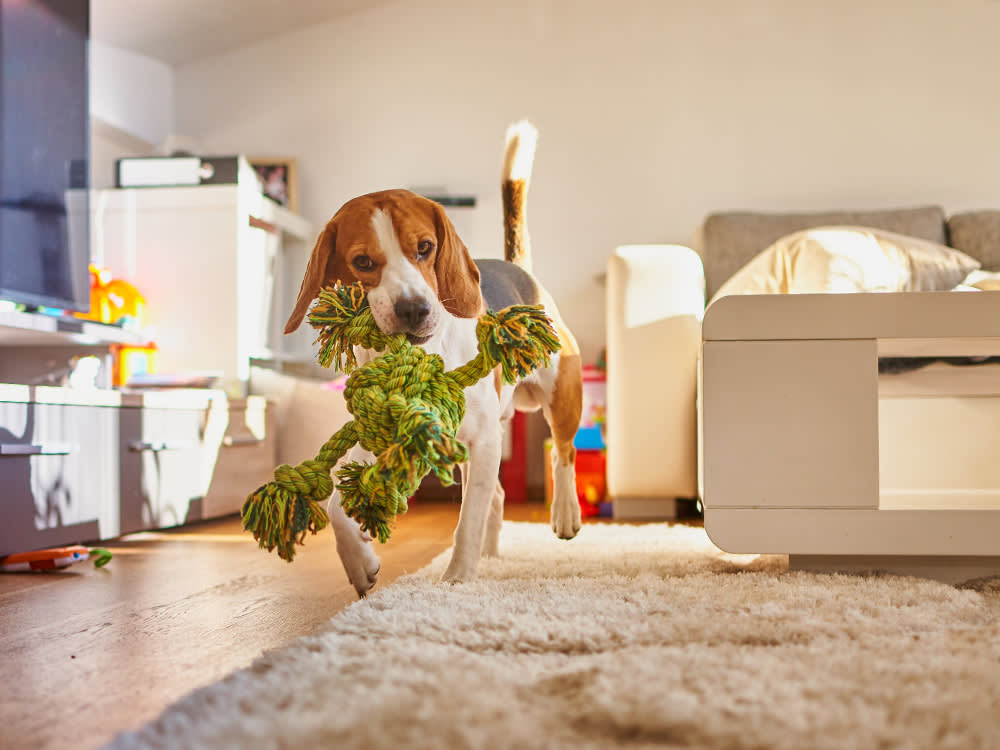
share article

Your pet wants you to read our newsletter. (Then give them a treat.)
Adopting a new dog, especially a puppy, isn’t like bringing home a baby — it’s like having a curious toddler who’s itching to sniff, claw, and nibble their way into every nook and cranny of your home. Some dangers like toxic plantsopens in a new tab and foodopens in a new tab are common knowledge, but do you know about the other threats that might lurk around your home? From the bathroom and laundry room to the office and kitchen, there are plenty of hazards your pup can get into.
If you’re lucky, you may have a naturally chill dog, or you may be able to crate-train them and end up with a dog who’s content not chewing lamp cords or eating the bag of chocolate chips on the kitchen table. But even with the best-behaved dog, you’ll likely need to do some degree of pet-proofing in your home, at least at the beginning.
Dog-proofing isn’t about creating impossible challenges for your dog to defeat (hey, they might just think: Challenge, accepted!). And it’s not really about protecting your property either, no matter how much you love that vintage rug. It’s about safeguarding what’s truly important: your dog.
How to Puppy Proof Your Home
Use this list to dog-proof your house from top to bottom — and keep your pup safe and sound.
Kitchen
Food is the biggie here. There might be plenty of dangerous foods for dogsopens in a new tab sitting around including grapes, nuts, onions, and garlic. Keep it off the counters as much as possible, and keep cabinets closed to be sure that snooping dogs don’t get tempted.
But you’ll want to look beyond food, too, as it’s not just cookies or bacon that will have your pup lunging for the counter: Dogs have been known to eat all sorts of small items like twisty ties, bread clips, and even sponges, so make sure to tuck small objects away in cabinets or drawers. And always store knives and other sharp utensils safely.
The kitchen trash can (and the smell) might be too enticing for some pups. Stop your dog from getting into the trash while keeping them safe by using a covered garbage bin. Consider getting one with a locking mechanism if you have an especially inquisitive dog.
Bathroom and laundry room
It might be a small space, but hazards abound in the bathroom. There’s a lot to pet-proof here, especially if you’ve got a mischievous dog. Keep cleaning supplies, medication, and vitamins secured away.
As you can imagine, drinking from the toilet isn’t an ideal water source for dogs, especially with all harsh chemical cleaners. So, keep the toilet lid down. Other common hazards in many households include hair ties, floss, and other loose accessories; store them up high and safely away from pets.
Your dog might think an open washer or dryer looks like a cozy place to curl up for a nap. So keep the doors to both shut anytime you’re not loading or unloading clothes. And stash laundry detergent (especially the pod variety) and fabric softener on a high shelf or tucked away where your dog can’t reach them.
Living room
They may just look like boring rubber cords to you, but those cords from lamps, the TV, and other electronics could very well entice your dog to get to gnawing because of the plastic coating. It is a good idea to cover or tuck them all out of sight.
If you must keep plants toxic to dogs around, ensure they are high up and entirely out of reach. All plants, including non-toxic onesopens in a new tab, should be secured so that a dog (or cat) cannot knock them over.
Move children’s toys, small valuables, and any other loose ends out of sight of your pets. While open windows are an excellent way to let in the breeze, don’t leave them open while you’re away. Dogs can (and will!) jump through screens if a bird or squirrel is tempting them from the other side.
Bedrooms
The room where you snooze is generally safe, but loose socks can be a real hazardopens in a new tab if you have a dog who eats everything. Put away laundry, and if you have a low dresser, make sure loose change or other small objects are contained.
Puppies chew on everything. So, it’s important to safely put away anything valuable. Those ballet flats, Air Pods, purse, or even your phone could all turn into super expensive chew toys if you don’t watch out.
Everywhere else
To completely dog-proof your whole house, get on all fours and think outside the box! Pets can get into all sorts of things, from rubber bands to plastic bags to items that may never cross your mind. While these dangers might not be an issue for all animals, it just takes a moment of curiosity for them to cause an emergency for your pet. Get down and look at the world from your dog’s point of view to see what could be a potential hazard in your home.

Daniela Lopez
Daniela Lopez is a digital media specialist and long-time contributor to The Bark.
Related articles
![Staffordshire bull terrier dog eating grass]() opens in a new tab
opens in a new tab15 Things You Think Are Toxic for Dogs — But Actually Aren't
From (human) prescription meds to poinsettia plants, these "toxic" items may not be so bad for your pup.
![dog and cat snuggling together]() opens in a new tab
opens in a new tabAnimal House: How to Intro a New Dog to Your Other Pets
Without turning your home into a circus.
![Dog in the grass outside chewing on a bully stick]() opens in a new tab
opens in a new tabChew on This: A Guide to Safe and Not-So-Safe Dog Bones
Two experts — a veterinary dentist and internist — rate the most popular dog bones.
- opens in a new tab
Can Dogs Eat Almonds (and Other Nuts)?
This healthy snack for humans isn't so healthy for your pup. Here's why it's best to avoid them.
![Gray cat in a yellow pet carrier]() opens in a new tab
opens in a new tabHow to Prepare Your Pet for a Natural Disaster
The East Coast just had a rare earthquake. A vet breaks down what to include in an emergency go-bag for your pet in times like this.
![Small tan dog on the lap of a woman in a protective stance]() opens in a new tab
opens in a new tab“How Can I Stop My Dog From Being Overly Protective of Me?”
Dog trainer Robert Haussmann’s tips for dealing with a protective dog that’s taken their duties too far.
